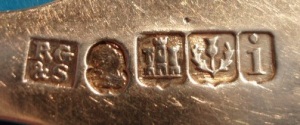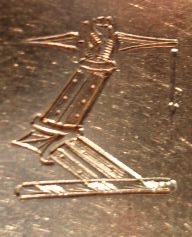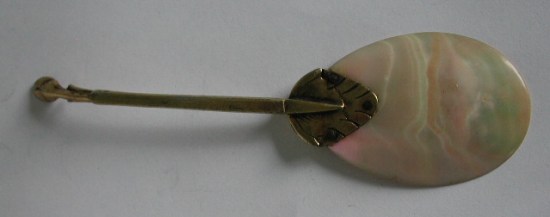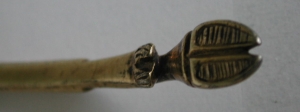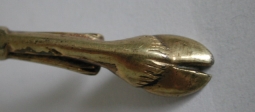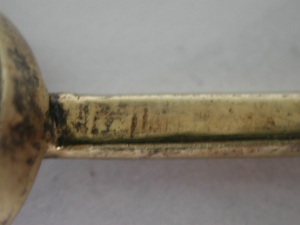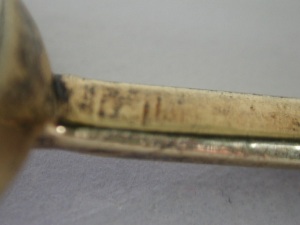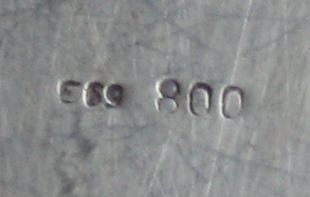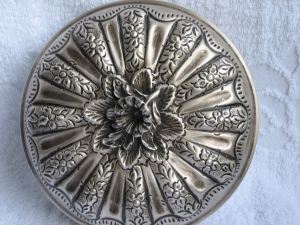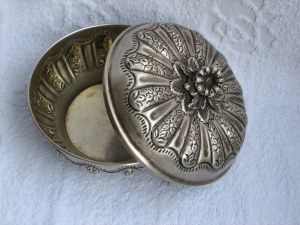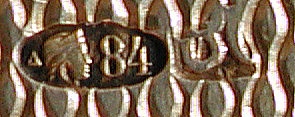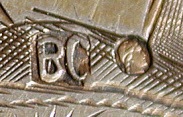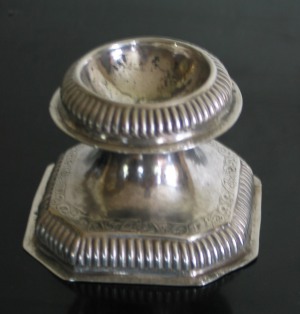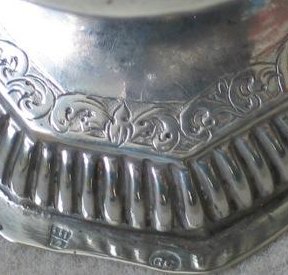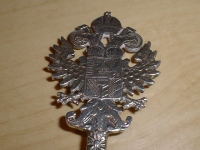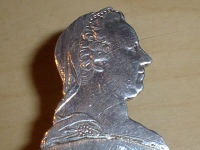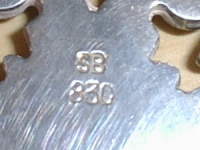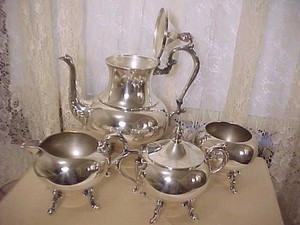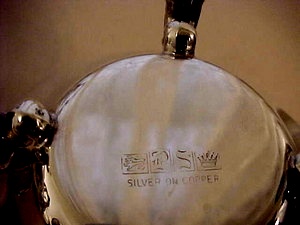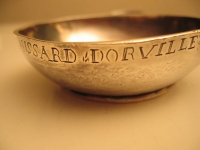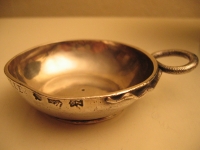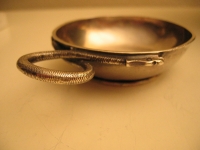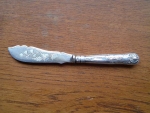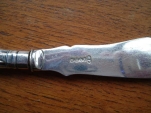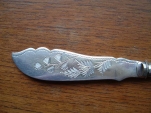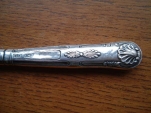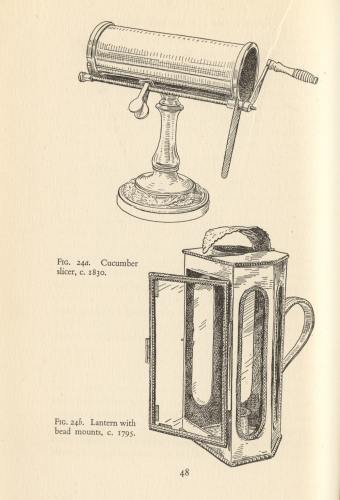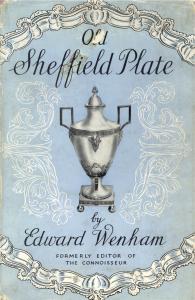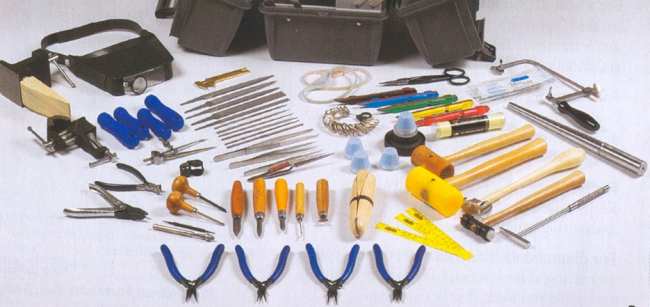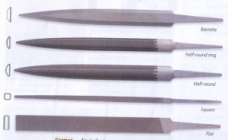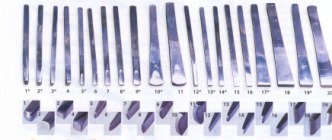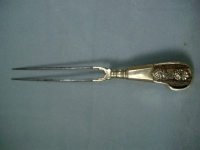 newsletter # 25 May 2006
newsletter # 25 May 2006www.ASCASonline.org
email: silverassociation@yahoo.it
YOUR GUIDE TO THE MAY NEWSLETTER: new articles new members members' window questions replies a page per month what is this piece? contributors to May Newsletter search engine disclaimer and privacy policy
|
|
Pierre Gagnaux presents: Story of a forgery Histoire de faux a fake icon and a fake silver 'riza'. How to discover a well planned theft English |
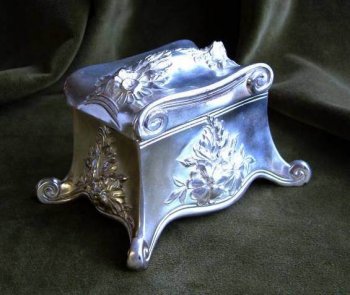
Joanne Wiertella presents: American Art Metal Jewelry Boxes 1900-1925 Jewel boxes, also called 'caskets', gained great favor -from the tiniest ring box to the very large handkerchief and glove boxes. They were made of cast metal, first plated with copper, then with silver or gold. Joanna Wiertella offers an introduction to American Metal Jewelry Boxes from 1900 - 1925 from her book on these fascinating objects. click here |
New members
Welcome to new ASCAS members:
Michael Blake - England UK
David Elyea - USA
Sheila Felker - USA
Fritz Guercke - Germany
Miles Harrison - England UK
Hilda Hayson - USA
Karl Ickes - USA
Glen Jacobs - New Zealand
Maria Letizia Lombardi - Italy
Pauline McClafferty - Canada
Mimi Sansbury - USA
Donna Schoyen - Canada
Pat Steen - Northern Ireland UK
Hada Shamma - UAE
Roland Swälas - Sweden
Alan Taylor - England UK
Members' Window # 25
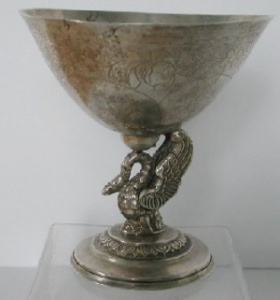
Hymie Dinerstein presents: A Danish sterling silver bowl A Danish bowl or drinking vessel with a swan holding the bowl, possibly made to commemorate the fairy story 'The ugly duckling' by Hans Christian Andersen. click here |
Questions from ASCAS members
Lars Björkman writes:
...... I have a question concerning half a dozen of Scottish
dessert spoons made by Robert Gray & Son in Glasgow but
hallmarked in Edinburgh 1814 (Glasgow did not have hallmark
rights at that time). My problem is that I do not know whom to
ask for the family/clan crest on the up-side of the spoon.
I have gone through hundreds of crests, some of which are
similar but none has exactly the same arm holding the weapon
which looks like a flail. You must have contacts among Scottish
silver experts who can help out with this
Best regards from Gothenburg where finally the snow is melting
away!
Lars Björkman
Hymie Dinerstein writes
.....enclosed are photos of a hoof-opped spoon, silver gilt,
with mother of pearl flat bowl (unmarked) which I believe is
17th Century.
Have your readers ever seen one like this.
Any comments will be welcome
H. Dinerstein
Carmen Damian writes:
... hello!
this is a wonderful candy dish, diameter 15 cm, h=7 cm, weights=260
g, but have only mark 'E 69 800'-
What can be?
Regards, Carmen
Greg Montana writes:
... Hello Giorgio, I mentioned to you a couple of months ago
that if I purchase this cross I will send the pictures for your
newsletter. Here are the pictures of a silver cross which was a
possession of the last Empress of Russia Alexandra Feodorovna.
The engraving is in Russian Church Slavonic and says:
The storehouse of Her Imperial Majesty, Empress of Russia
Alexandra Feodorovna.
Its provenance: it belonged to a Russian noble family in
England.
I hope you enjoy the pictures.
Greg Montana
This is the opinion of Pierre Gagnaux, known to ASCAS members for his articles about Russian silver (an article is published also in this Newsletter):
...For the russian piece of silver,
it dates between 1908-1917, Moscow, and the silversmith is
Vasily Semenov. The quality is not good enough for an Imperial
present to an important person. I think it was a simple gift for
somebody who has something to do with the Russian Empire. There
are thousands of gifts made to people working around the
Imperial family and this cross has a very simple engraving,
partially machine made. I think it was a gift for a nurse or
somebody equivalent as it's really too cheap for a noble or a
dignitary. It may possibly belong to a noble family, but in this
case the family was of little importance.
Anyway this
is an interesting and nice piece but of moderate interest for me.
Pierre
Svein Solhjell writes:
... I would like to find out more (origin and date especially) about this antique salt.
Here I send a picture showing the hallmarks. GG for the maker, I
think, and the interesting one: Above the line 3 'fishes' and
below it may be a sort of I2, perhaps IL or maybe a n?
Regards
Svein Solhjell
Ian Crowland writes:
... I have been trying to research the silver item shown in
attachments.
Having slaved over page upon page of heraldic pages I have given
up and remain undecided as to the origins of this piece be it
Russian or German.
There is no hallmark to help and the only markings are shown in
the third attachment. I guess that the piece is 'plated' an
assumption based on the lack of a hallmark.
I would welcome any help on this item and thank you in advance.
Regards
Ian
Georgetta Schnurr writes:
...I'm looking for any information on a tea set that I have
acquired and I hope that maybe you can help me. I need help on
identifying the stamps on it. In order the stamps are:
a cat with it's right paw held up and it's head facing towards
you, two Gothic looking letters that appear to be P S and a five
point crown.
Thank you so much for your time.
Georgetta Schnurr
Replies to members' questions
| P-G Begin
receives this reply about his wine tester question
( see April Newsletter) Charles C. Cage writes: Regarding P-G Beghin¹s wine taster, I believe it is
from Dijon, France, 1775-76. 'Les orfèvres de Bourgogne'
by Armand de Chassey, et al. (Paris: Éditions du
Patrimone, 1999) identifies the marks as follows:
|
Les Salvage receives this reply about his butter knife question ( see April Newsletter) ' Geoffrey Axt writes: .... in response to Les Salvage's inquiry about his
butter knife, the object was made by Henry Hobson & Son
at 92 Queen Street, Sheffield.
|
"A page per month"
In this column we present a page (one
page only) obtained from makers' brochures, books, auction
catalogs or whatever other printed paper, that may be of
particular interest for ASCAS members.
The images will be published at a "low resolution" level and for
private and personal use only
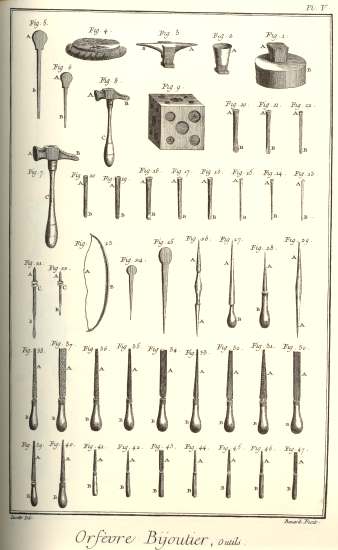
|
In April Newsletter
(click here) ASCAS presented the images of ancient
silversmith's tools from Planche V 'Outils' of L'Encyclopèdie
Diderot & D'Alambert, coupled to the table of the
corresponding 'legend' containing the French name of
each tool. I'm still unable to offer the complete
English translation of the page, but some useful
information was obtained from the RIO GRANDE (Albuquerque)
sale catalog "Tools & Equipment 2004".
|
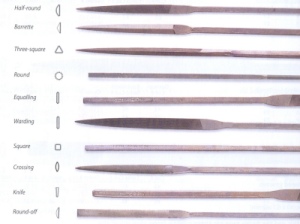 |
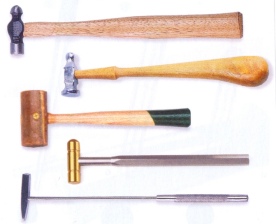 |
set of files: half-round, barrette, three-square, round, equalling, warding, square, crossing, knife, round-off |
hammer: ball peen, chasing, lead-filled
mallet, brass-head, riveting
|
|
# Table Encyclopèdie
|
English name
|
|
|
# 3 bench anvil (round horn and flat horn) |
|
|
# 7- 8 goldsmith's hammer for riveting and shaping |
|
|
# 13-14-15-16-17 chasing tools |
 |
# 30 flat file - # 31 half-round ring file -
|
 Grazie al cortese aiuto di Paolo Leonelli ASCAS è in grado di
fornire anche la traduzione in italiano della maggior parte
degli attrezzi contenuti nella tavola dell'Encyclopèdie Diderot
& D'Alambert. Alcuni degli attrezzi sono poco decifrabili
nell'illustrazione, ma nella maggior parte sono ancora
utilizzati nelle (poche) botteghe ancora operanti in Italia (il
# corrisponde a quello indicato sulla tavola dell'Encyclopèdie):
Grazie al cortese aiuto di Paolo Leonelli ASCAS è in grado di
fornire anche la traduzione in italiano della maggior parte
degli attrezzi contenuti nella tavola dell'Encyclopèdie Diderot
& D'Alambert. Alcuni degli attrezzi sono poco decifrabili
nell'illustrazione, ma nella maggior parte sono ancora
utilizzati nelle (poche) botteghe ancora operanti in Italia (il
# corrisponde a quello indicato sulla tavola dell'Encyclopèdie):
Attrezzi da argentiere e cesellatore:
1) Tasso B supporto in legno - 2)Tasso da banco - 3) Bicornia da
banco A punta quadrata B punta tonda 4) Piatto con pece per
cesello - 5) Martello in legno ? - 6) Martello in legno ? - 7)
Martello da cesellatore o mazzetta - 8) Martello da cesellatore
o mazzetta - 9) Bottoniera - 10) Fino a 20) scalpelli e ferri da
cesello - 21) e 22) Punte per trapano ad arco - 23) Trapano ad
arco - 24) e 25) Punte per smaltare ? - 26) e 27) Limette - 28)
e 29) Brunitori - 30) Lima piana - 31) Lima mezza tonda - 32)
Lima quadrata - 33) Lima a coltello - 34) Lima a triangolo - 35)
Lima a coda di topo - 36) Lima ovale - 37) Raspa - 38) Raspa
mezza tonda - 39) Raspa quadrata - 40) Raspa a coda di topo -
41) Limette da traforo varie sagome
Paolo Leonelli organizzerà tra poco un corso di sbalzo e cesello
(vedi sotto per maggiori informazioni)
What is this piece ???
Mary Clarke 'mystery items'
( see April Newsletter) receives this reply:Paolo Leonelli writes:
.... I believe that the items of Mary Clarke on 'What is
this piece ???' (April Newsletter) are a roast fork and a knife
sharpener belonging, maybe, to a travel set.
 Un'altra informazione che può interessare i lettori italiani:
Un'altra informazione che può interessare i lettori italiani:
ad ottobre darò il via al primo corso di sbalzo e cesello
destinato a tutte le persone che per hobby o per lavoro sono
interessate ad apprendere questa antica tecnica di lavorazione
del metallo. Il corso si svolgerà a Roma. Tra poco sarà visibile
sul sito Internet www.argentiantichi.it la scheda del
corso base.
Chi fosse interessato può contattarmi e sarò lieto di dare
maggiori informazioni.
Paolo Leonelli
Closing our MAY 2006 edition of ASCAS
Newsletter I hope you have appreciated its content.
Your comments, suggestions and advice will be of great help.
My thanks to Geoffrey Axt (USA), Lars Björkman (Sweden), Charles
C. Cage (USA), Ian Crowland (UK), Carmen Damian (Romania), Jayne Dye (USA), Hymie
Dinerstein (UK), Pierre Gagnaux (Switzerland), Paolo Leonelli (Italy),
Greg Montana (Canada), Svein Solhjell (Norway), Georgetta
Schnurr (USA), Joanne Wiertella (USA), for their invaluable
contributions.
Giorgio Busetto
Secretary
ASCAS is a community of people having a common
interest in antique silver.
|


